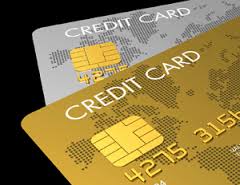The arrival of a reissued credit card in the mail can mean inconvenience. But in some parts of the world right now, it should be cause for celebration. Magnetic strip credit cards that are replaced with ‘chip and PIN’ cards mean their owners can look forward to eventually enjoying the same level of fraud protection that others around the globe have had for a while.
Chip and PIN cards are a feature of EMV, short for Europay Mastercard Visa, a credit card transaction standard that was originally released in Europe in 1994. Over the last 20+ years, EMV has been adopted by many credit card providers. In North America, where magnetic strips are used far more commonly to collect purchase data, the conversion to EMV is finally underway.
Chip and PIN cards dramatically reduce the risk of card theft and fraud at points of sale. The ’93chip’94 encodes the information transferred to the merchant, such as account numbers, and sends it differently with each transaction. Even if thieves manage to steal data from a merchant, they stealing little more than the equivalent of expired passwords. Chips are also significantly more difficult to duplicate than magnetic stripes. Consumers must also enter a ’93PIN,’94 or Personal Identification Number, when prompted.
While this system offers extra protection, there can also be inconvenience when travelers used to one type of payment system visit a country where another is used. For example, Chip and PIN cards used in magnetic strip systems are vulnerable to point of sale fraud in the same ways that magnetic strip cards are. Magnetic strip cards do not always have chip and PIN and sometimes, EMV payment systems are not able to accommodate those cards.
It’s important for international travelers to consult their credit card provider prior to departure, and confirm that their card will be compatible to their destination’s preferred payment system. It’s also important to know that in a ’93magnetic stripe’94 country, you may be advised not to let the card out of your sight — and in a ’93chip and PIN’94 country, you’ll need to remember to take the card with you when the transaction is complete.
Written by Erin Fitzgerald, International Product Manager, Living Abroad


